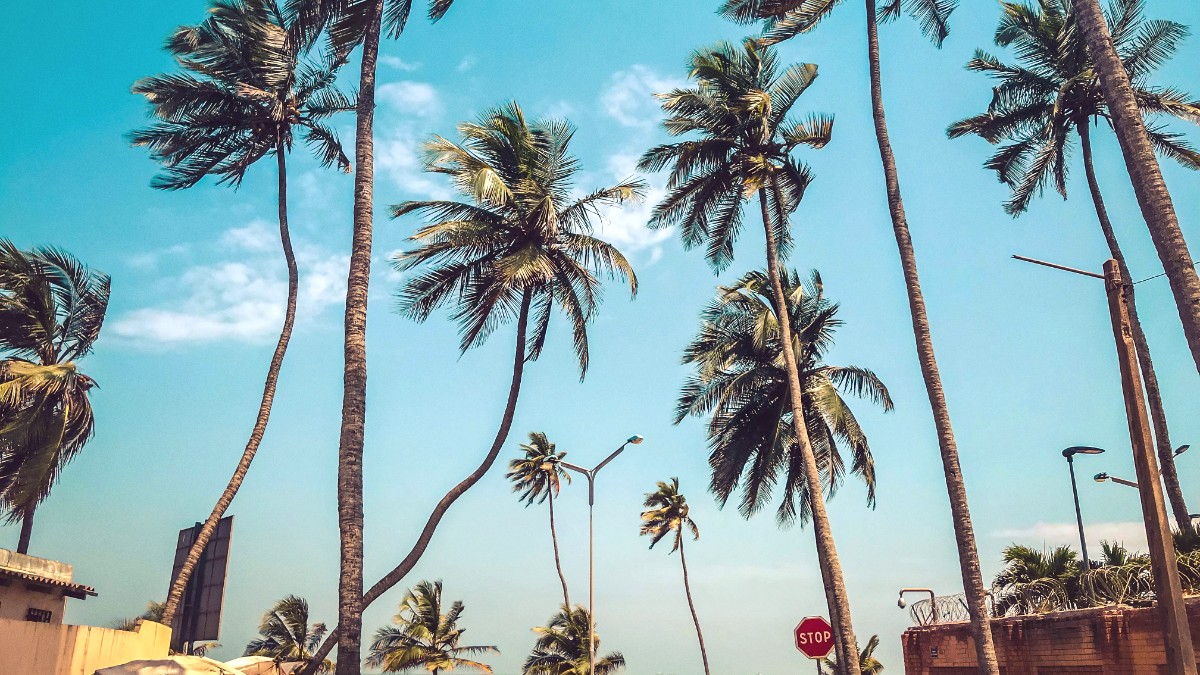
Togo
Togoville sits approximately 60 kilometers (37 miles) northeast of Lomé. Reach it by bush taxi (shared taxi) from Lomé or a private car with a driver. The journey includes crossing a lagoon, often by dugout canoe or a small ferry, to enter the village.
Togoville carries immense historical and spiritual weight. In 1884, a treaty was signed here between local chiefs and German representatives, establishing the German protectorate of Togoland. Discover the German-built cathedral (Notre Dame du Lac Togo). Explore the local museum, with items from the region's past. Togoville holds significance as a spiritual heartland of Vodou (Voodoo) in Togo. You can visit traditional shrines and learn about local practices. A local guide greatly aids in comprehending the historical background and cultural differences. The village rests on the calm shores of Lake Togo, for pleasant views and boat rides.
Several compelling destinations are close to Lomé, each showing a different part of Togolese life and history.
Aneho is about 45 kilometers (28 miles) east of Lomé, coastal. Bush taxi or private car from Lomé. Aneho was Togo's former colonial capital. It has a rich history and earlier colonial influences. Discover its colonial buildings and historical sites. Its coastal spot also has quieter beaches. It pairs well with Togoville for a full day.
Kpalimé is about 120 kilometers (75 miles) northwest of Lomé. Travel takes about 2.5-3 hours by road. Bush taxi, shared taxi, or private car from Lomé. The road is generally good. Kpalimé differs from coastal Lomé, located in a lush, mountainous area. It serves as a center for nature and adventure. It has green hills, rich land, and many waterfalls, like Cascade de Kpimé where you can swim. Walk through cocoa and coffee plantations to learn about their growth. A small butterfly garden shows local types. The surrounding hills invite walks, including trails to viewpoints or Mount Agou, Togo's highest peak (986m). Local guides readily assist with walks and plantation tours. Kpalimé also has artisan places for crafts and souvenirs.
Beyond the city, Togo presents beautiful natural settings near Lomé. Day trips from Lomé are rich in cultural and historical aspects, for insights into Togo's heritage.
Lake Togo: The large, serene Lake Togo, near Togoville, offers peaceful boat rides and viewing local fishing communities and birdlife. It presents a calm setting away from the city.
The coastal road east of Lomé towards Aneho gives scenic views of the Atlantic Ocean. The drive towards Kpalimé passes through varied landscapes, from flat coastal plains to rolling hills and lush green forests.
Avétonou Beach: A quieter, more secluded beach further east of Lomé. Mount Agou: Togo's highest peak (986m) near Kpalimé, presents challenging walking spots and panoramic views. Rural areas around Kpalimé let you see rural Togolese life.
Togoville: Its historical importance as the site of the German protectorate treaty and its continued standing as a Vodou spiritual center make it a strong historical excursion. Aneho: As a former colonial capital, Aneho shows a look into Togo's past administrative places and features colonial-era buildings.
The villages around Kpalimé make for learning about cocoa and coffee farming, observing traditional agricultural methods, and meeting rural communities. Various villages along the main roads out of Lomé show traditional Togolese life, for observing daily routines and local craftsmanship.
For those with more time, Lomé presents an excellent starting point for longer regional explorations.
An overnight stay in Kpalimé for a more relaxed discovery of its natural attractions. Dedicate a full day to walking to waterfalls and Mount Agou, and another day to visiting cocoa/coffee plantations and local artisan places. This makes a refreshing contrast to Lomé's city energy.
Use a day to drive further east along the coast from Aneho, potentially finding more remote and calm beaches or local fishing villages beyond the immediate Lomé area. This journey offers continuous scenic views of the Atlantic Ocean.
For a look into Togo's interior and northern cultures (e.g., Kabyé), a multi-day trip to Sokodé and Kara is an option. This needs more travel time but presents a very different cultural landscape.
Regular shared taxis (bush taxis) and long-distance buses connect Lomé to major cities in both Ghana and Benin, making cross-border travel straightforward. You can hire private cars with drivers for more comfortable and direct journeys.
Lomé → Kpalimé (nature, agriculture) → Atakpamé (plateau region, crafts) → Sokodé → Kara (Kabyé culture, traditional wrestling).
Lomé → Cotonou → Ganvié → Abomey (Benin) or Lomé → Accra → Cape Coast → Elmina (Ghana).
Cotonou, Benin's economic hub, for Ganvié (stilt village) and Abomey (UNESCO palaces). Seamlessly connected from Lomé.